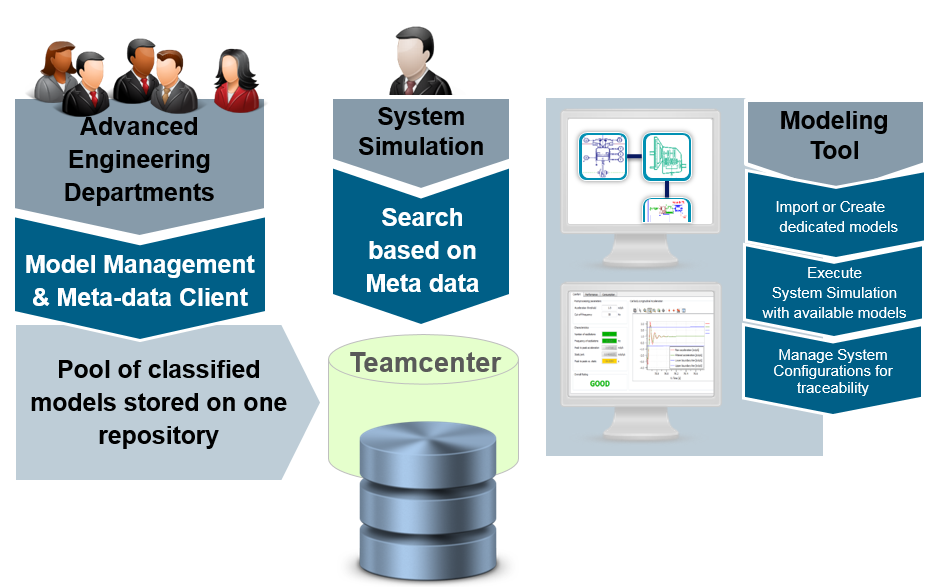Model Management 101

It is estimated that in a vehicle program, around 10,000 decisions need to be made. The decisions you are making are based on testing a design against requirements. These decisions come at a cost. The cost increases in proportion to the stage the program is in. The sooner in the program cycle, you make these important decisions, the better the chances that your program meets cost and schedule targets, as previously discussed in Integrated Systems Engineering…it’s all about leverage.
So how do you make these decisions? By testing your design assumptions. Since so much testing is required in modern systems, testing on only physical prototypes can be costly. To get around this limitation, you can create a digital representation or digital twin of the system. These digital representations are called models and they represent a particular aspect of the system such as geometry, behavior, control logic, and so on.
These models are created in specialized modeling tools such as MATLAB and Simcenter Amesim.
Models can be classified based on their spatial dimensions and complexity such as 1D, 2D, and 3D models. Since 1D models are easier to develop and their simulations are computationally less intensive, they are used in the initial program phases for system testing.

As we mentioned before, if we can identify issues and take design decisions early in the program lifecycle, our chances of meeting cost and time estimates are better. In addition, models provide additional value such as generating code, performing reliability analysis and so on. Thus, it becomes very important to manage your 1D models and the modeling process.
Let’s look at how Ed, a domain analyst, performs a simulation of a part in the context of a system. To perform the simulation, Ed needs models of other parts of the system. Once he has the models, he will combine the models and perform the simulation of the system. But these models are developed by different teams. Ed needs to ask each team to give him the models he needs.

This approach has a number of problems. The models are stored in repositories that are accessible only to users of that particular group. For a person from another group, finding that model is a challenge. Now consider what happens after the simulation results are generated. Can others use this knowledge? What happens if teams are spread across locations?

These problems don’t allow your Systems Engineering processes to scale and degrades the performance of your programs. Let us consider a few other problems with this approach:
- Storage problem: Where do you store all the models and the results of the simulation?
- Coordination problem: What is the process of storing and using models?
- Access problem: Who has access to models?
- Evolution problem: How do the models evolve over time?
- Search problem: Can you search through various models and re-use them?
- Categorization problem: Can you classify models in pre-defined categories?
To address these problems, Teamcenter has introduced a 1D model management solution. This is how it works:
Each department, depending on their needs, uses a modeling tool such as Matlab Simulink or Simcenter Amesim. When they create or update a model, this model is saved to Teamcenter. Once a model is in Teamcenter, you can take advantage of the capabilities of Teamcenter. A few Teamcenter capabilities that you can use to manage models are:
- Enforce organization-wide processes that allow you to define how models are stored and used.
- Establish model dependencies. This allows you to create links between models and other parts of the system and processes such as requirements.
- Control who has access to models.
- Model version control to decide how models evolve. This is required for concurrent engineering.
- Search and re-use models: You can search for different models and re-use them.
- Classify models into categories that you can use.
Now using Teamcenter Model Management, when Ed wants to perform a simulation, he searches for the models he wants in Teamcenter, opens the model in the modeling tool, performs the simulation, and saves the model and simulation results back to Teamcenter. If another analyst, Jane wants to perform the same simulation as Ed, but only needs to change some parameters, she can reuse the simulation that Ed performed.
As we mentioned at the beginning of this post, it takes around 10,000 decisions to complete a vehicle program. 1D modeling allows you to take a lot of those decisions in the early stages of the program. Teamcenter Model Management allows you to manage these 1D models thus allowing you to make effective and early design decisions.


